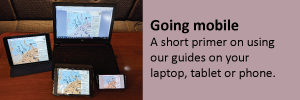Pendrell Sound famously tepid

A view south into stillness from the head of Pendrell Sound. (Photo by Conrad Nay)
It’s a quirk of nature and geography, a tidal zone near where the Johnstone and Georgia straits collide, deep but with limited water circulation and drainage — the warm water tends to stay in the sound, near the surface. The result is a year-round water temperature of more than 23°C (74°F), and summer temperatures hitting 25°C (80°F). Some say these are the warmest Pacific waters north of Mexico.
Water temperature averages most everywhere else in the Salish Sea are hard-pressed to creep above 12°C (54°F).

Looking north from Komoks Cove toward the head of Pendrell Sound. (Photo by vpavoni)
The warm water is conducive for farming Pacific oyster spat (seed), a delicate breeding industry which has led to a ban on sewage discharge and no-wake speed limits in Pendrell Sound.
Many boating families come just to swim, to float about on rubber rafts; the beauty of the place is a side benefit.
Pendrell Sound is a magnificent inlet which almost slices East Redonda Island in half. Just before entering the bay at the head of Pendrell Sound, boats will pass a popular anchorage we have called “Komoks Cove”. Our bone to pick with this part of the world is that so many islands and bays are named for Europeans, often friends or colleagues of the ship captains with naming authority. In many cases, the namesakes had never set eyes on the land or sea named for them, or even on this continent, for that matter. The tiny anchorage seemed to be nameless on our first arrival, so we took the liberty of naming it for the Komoks First Nation, the people who lived here for some of their history before the Europeans arrived. You can name it anything you like.

Chartlet from Salish Sea Pilot’s Cruising Guide to Desolation Sound & the Discovery Islands. Not to be used for navigation.
Komoks is a pleasant anchorage with good protection and convenient shore ties. It can get busy in the summertime, sometimes accommodating a surprising number of boats when considerate early arrivals stern tie to shore rather than swing on anchor and limit the number of boats which can squeeze into the cove.
A lagoon to the northwest of the cove can be entered by paddle craft at higher tides and is fun to explore. Loggers have carved roads up the sides of Mount Bunsen and these can be accessed from Komoks Cove, offering hikers the opportunity to discover wonderful views.
Words of warning: Shards of stone along the beaches and other shoreline here and in much of Pendrell Sound are sharp. Never go ashore shoeless and be very cautious with inflatables.

Chartlet from Salish Sea Pilot’s Cruising Guide to Desolation Sound & the Discovery Islands. Not to be used for navigation.
The head of Pendrell Sound, north of Komoks Cove, offers excellent shore ties in settled weather. Along much of the shoreline that is suitable for stern ties initial depths are not extreme, allowing easy deployment of your anchor before securing a line to shore.

Magical anchorage off tiny islets near the head of Pendrell Sound. (Photo by Nawitka)
Our favourite place to anchor is north of little islets at the southern entrance to the bay. Take care not to disturb any pens that are within oyster spat leases in the bay.
For many newcomers to the Discovery Islands, Pendrell Sound is somewhere they have never heard of before. After spending a day or two anchored in the tranquil and magical surroundings, it is somewhere they might never forget.
(The anchorages of northern Pendrell Sound are covered in Salish Sea Pilot’s Cruising Guide to Desolation Sound & the DIscovery Islands.)



















I gotta ask! What part of the sound has warm surface water year round? I was there last week (mid March) and jumped in and the water was freezing. I checked numerous locations hoping this post wasn’t an urban legend. Any other facts to work with here? I wanna believe and will return to this site and to Pendrell.
Maybe I’ve been caught quoting an urban legend 🙂
We have heard similar stories for many years.
The temps I quote come from government sources which we think are official (therefore impeccable??). I did think that the numbers seemed a little wishful, and should have said that at the time. But I won’t go in an edit it to make myself sound more professorial.
I admit I never swam in Pendrell Sound in the winter. Lynne can swim in any water, no matter how freezing cold. And enjoy it. Me, not so much.
To save my reputation, I hope someone jumps in with an exact location, with lat and long, where you can experience a tropical swim in Pendrell Sound.
But not sure I would believe them.
I have not swum in that area but apparently the warm temperatures best occur in August, not the spring. The water needs time to warm up, given its volume and solar heat, its a slow process.
I have been there in August and water was 78. Very nice. 6’ down it was cold tho!